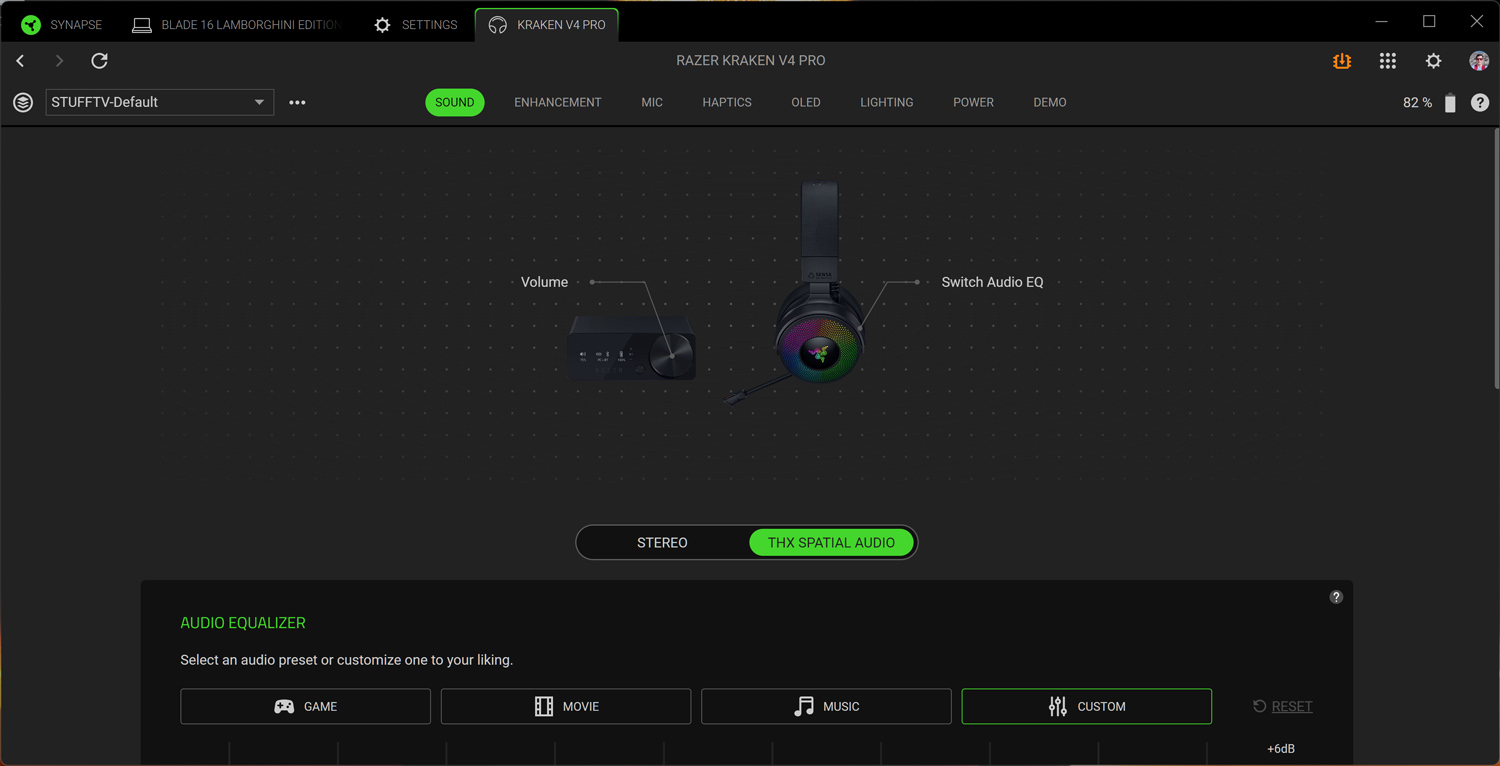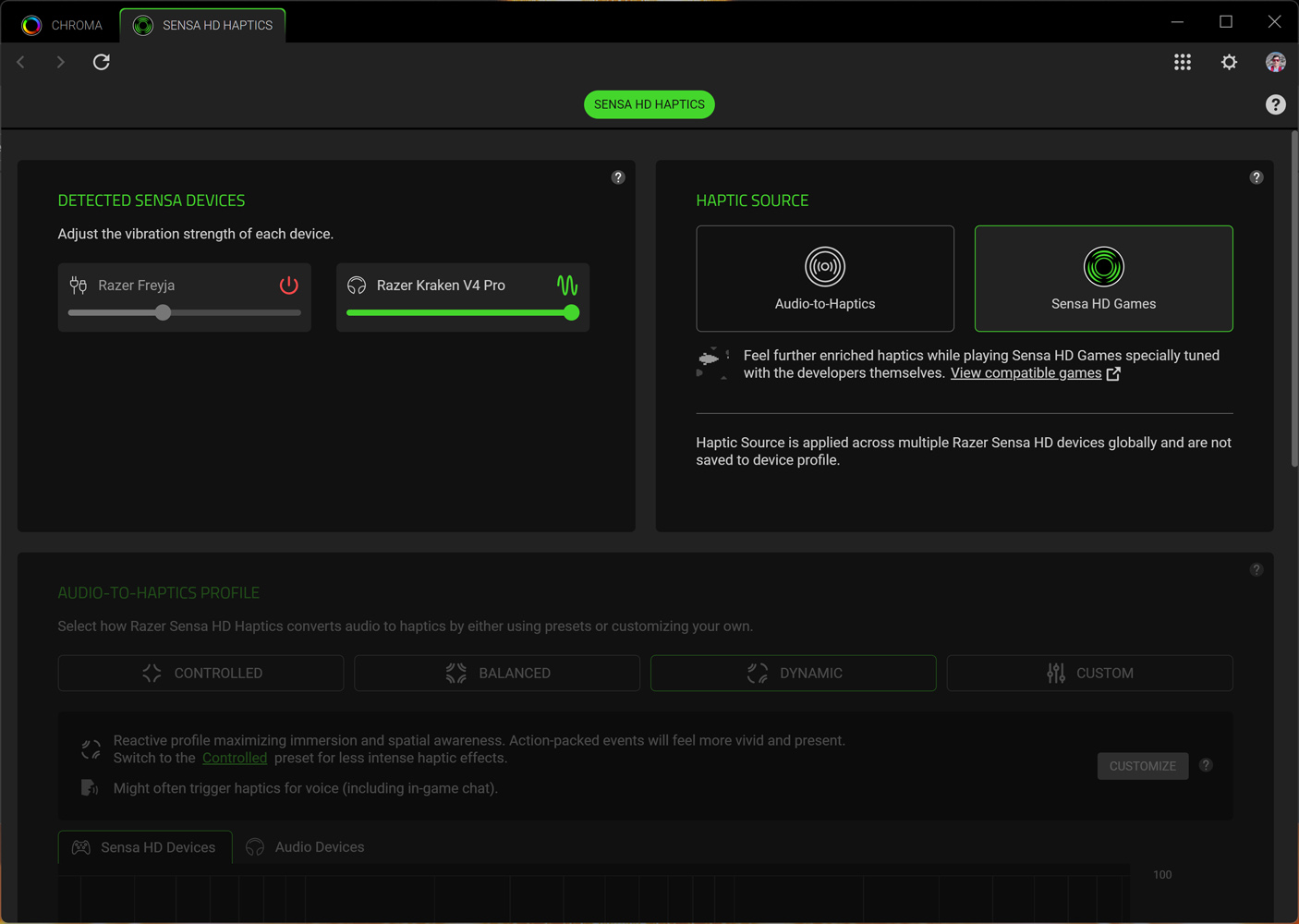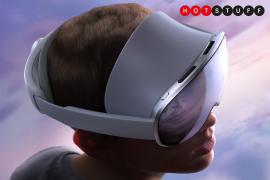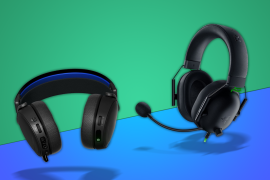Razer Kraken V4 Pro review: ready to rumble
Headset meets haptics - it's a skull-shaking combo
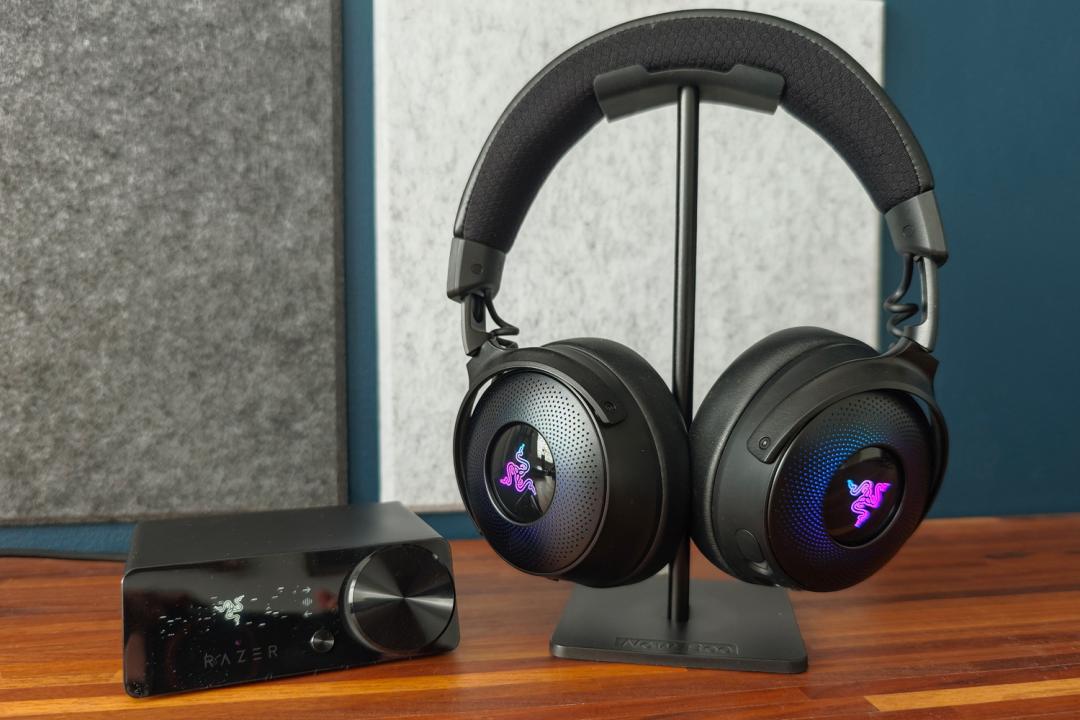
Stuff Verdict
A high-end headset that justifies its equally high-end price. The Kraken V4 Pro shines a spotlight on Razer’s exciting new haptic tech, but doesn’t forget to also sound great.
Pros
- Sensa HD haptics make gaming more immersive
- External control hub puts settings in easy reach
- Punchy and precise audio
- Sharp looks and sturdy construction
Cons
- Limited game support for haptics at launch
- Some initial software stumbles
- Undeniably pricey
Introduction
The Kraken V4 Pro is a high-end gaming headset with a difference – and not just because it comes with its own handy base station for adjusting your sound setup while you’re mid-multiplayer match. It’s the first with a new generation of force feedback meant to mimic the kind found in modern console controllers.
Sensa HD Haptics debuted inside the niche Razer Freyja, a bum-buzzing cushion that vibrates along to your in-game actions. Razer is hoping the new flagship Kraken will bring Sensa HD more into the mainstream. The V4 Pro is aimed at regular gamers, rather than the esports-grade Blackshark series, so gets all the goodies including Bluetooth connectivity and lashings of RGB lighting. It takes on other multi-device headsets including the Steelseries Arctis Nova Pro and Logitech G Astro A50 X, but at $400/£400, it’ll need to be as transformative as Razer claims if it wants to impress.
How we test headphones
Every pair of earphones and headphones reviewed on Stuff is used for a minimum of a week’s worth of daily listening. We use a playlist of test tracks made up of multiple genres to assess sound, and use our years of experience to compare to other models. Manufacturers have no visibility on reviews before they appear online, and we never accept payment to feature products.
Find out more about how we test and rate products.
Design & build: test of metal
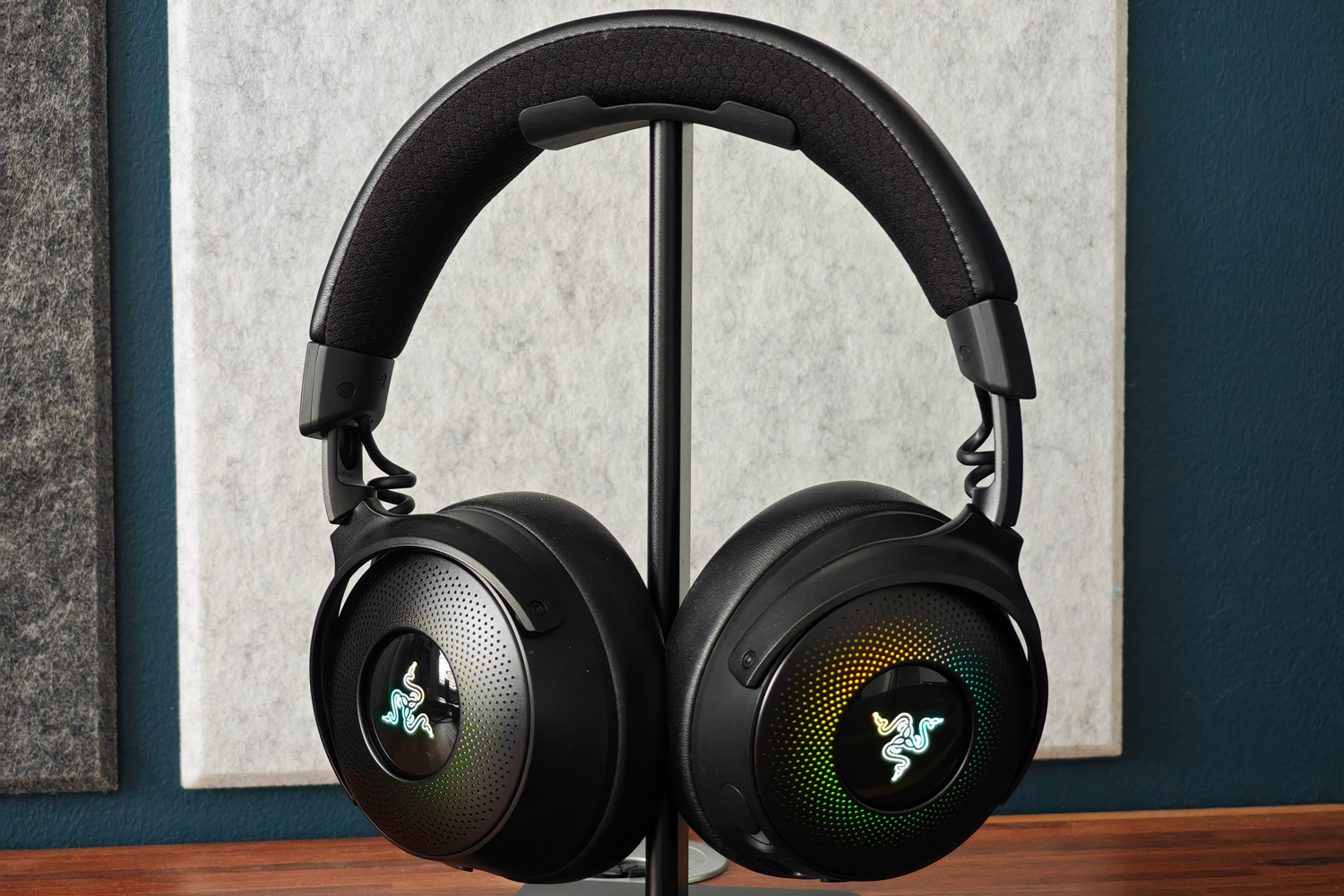
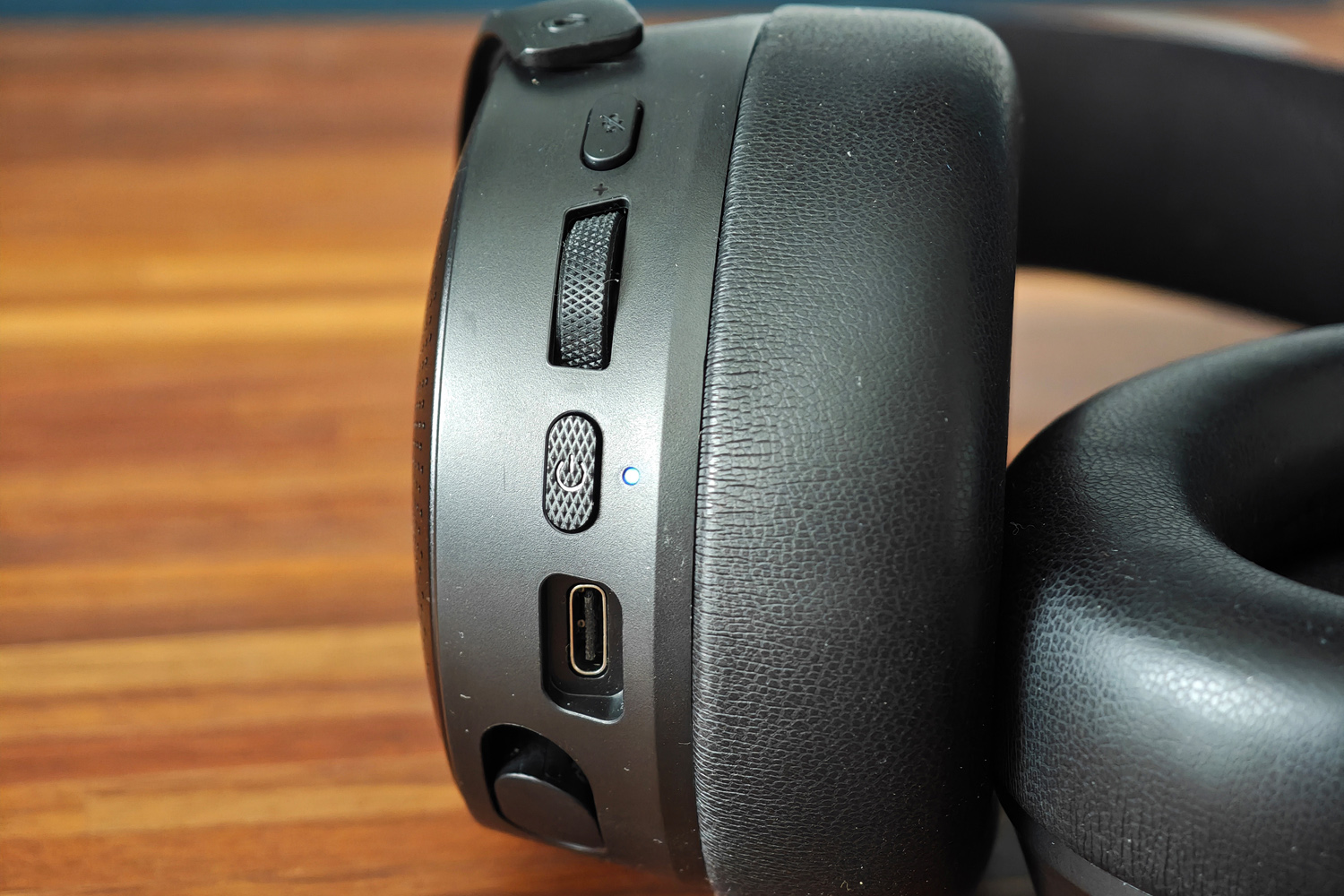
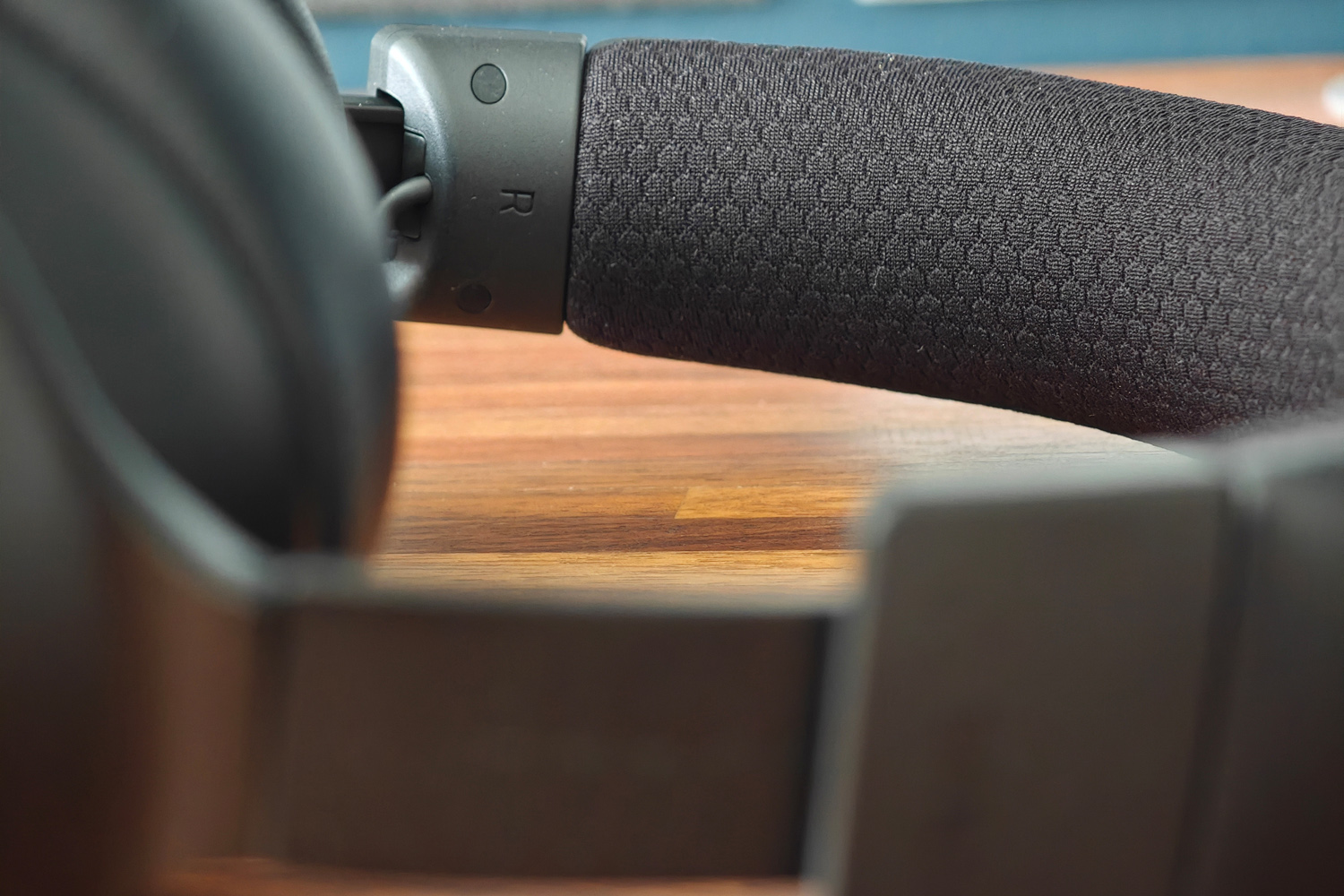
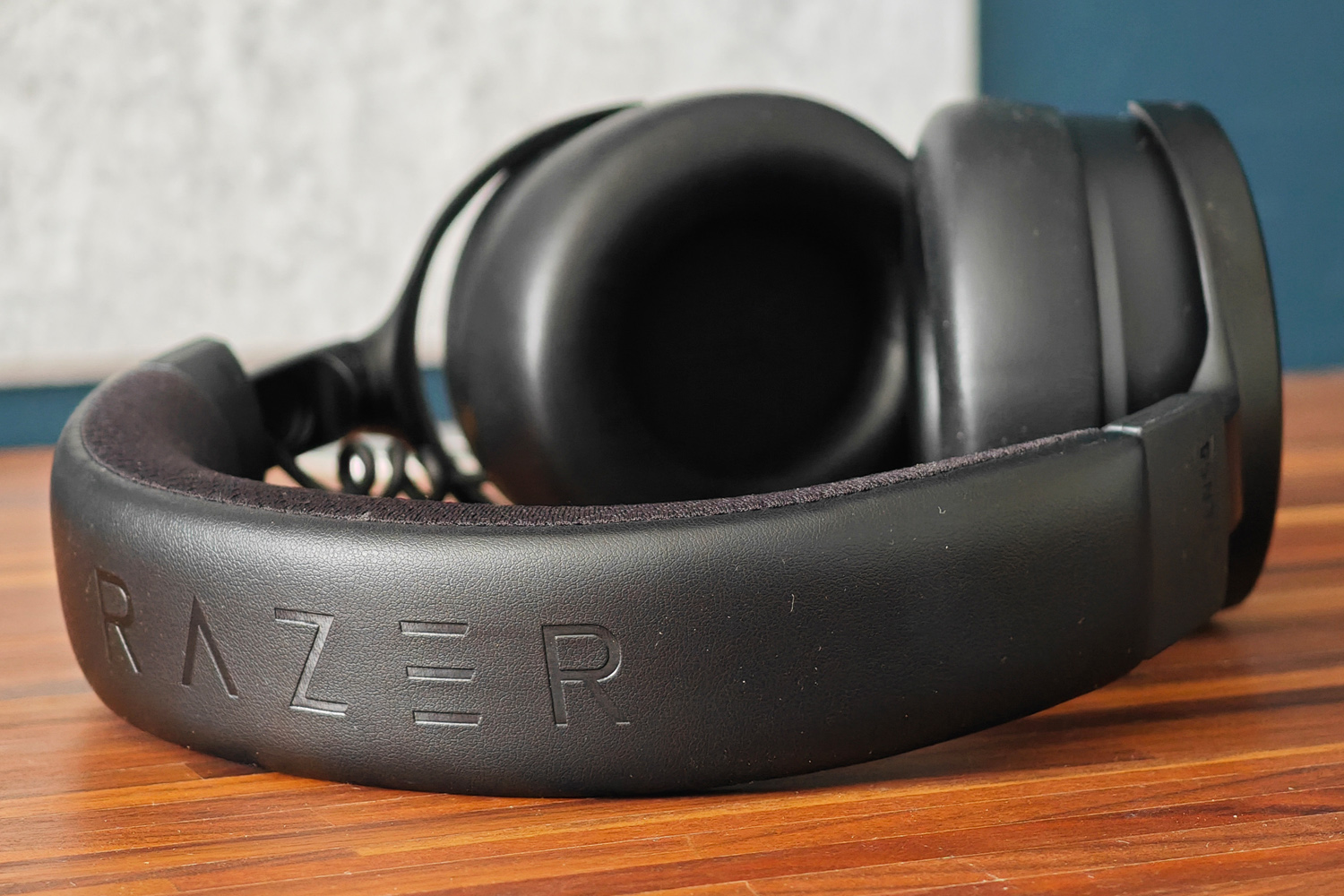
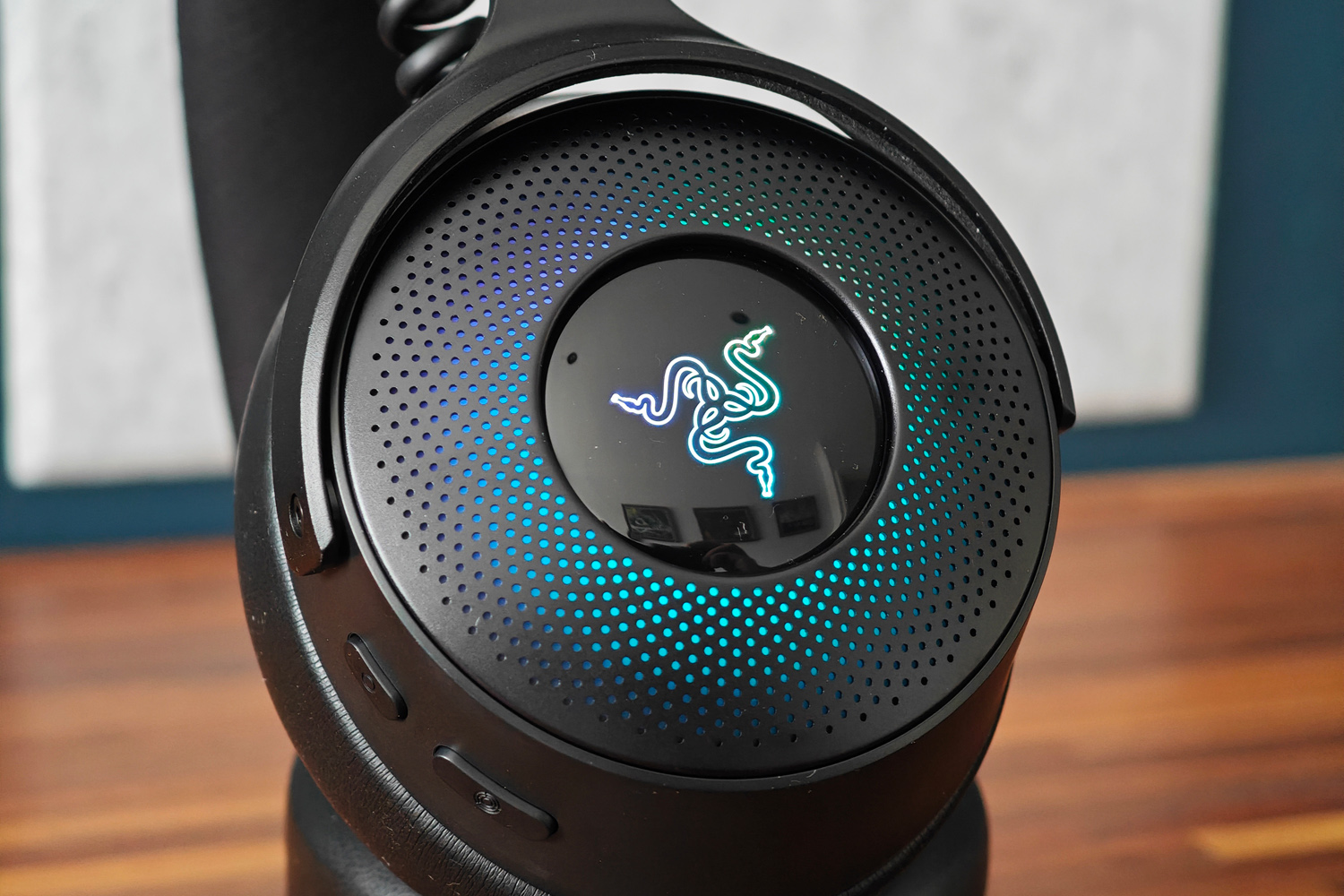
If the Kraken V4 Pro looks familiar, consider yourself a true Razer fan. The headset is virtually the same as the regular Kraken V4, with a new button dedicated to the haptics and a Sensa HD logo engraved on the metal headband. The ovalised ear cups are thinner, and with a smaller diameter than the previous generation. They also fold flat, DJ-style, to wear comfortably around your neck when not in use.
Plastic driver housings aside, this has been mostly milled out of metal. The precision-drilled ear cups that show off the RGB lighting underneath are about as far removed from the original plastic 2012 Kraken as it gets, and is up there with high-end audiophile headphones for visual appeal. I thought it looked pretty mean in matte black; like the regular Kraken V4, Razer doesn’t offer the Pro in any other colours.
This is a seriously comfortable headset, with just the right amount of clamping force that I could wear them through my entire working day without any ill effects. The fabric-wrapped headband packs in plenty of memory foam and the ear cups are thickly padded in faux leather. It’s not the most breathable material, so your ears can get a bit clammy after a while – but that’s true of most rival gaming headsets too. The notched headband gave plenty of adjustment, and I liked how the coiled cables stretched and contracted back into place as I extended or shortened the fit.
A handful of on-ear buttons, a USB-C charging port and a volume rocker on the ear cups make this a perfectly usable pair of headphones away from your console or PC, and the thick padding also did a great job of passively dampening background noise. With music playing at a sensible level, I struggled to make out what someone in the same room was saying.
I’m a big fan of the retractable boom microphone, too; you don’t have to remember where you left it, unlike detachable mics seen on other headsts. The firm yet flexible arm can be bent into place easily and it’ll stay there until you stow it again.
Features & battery: haptic headcase
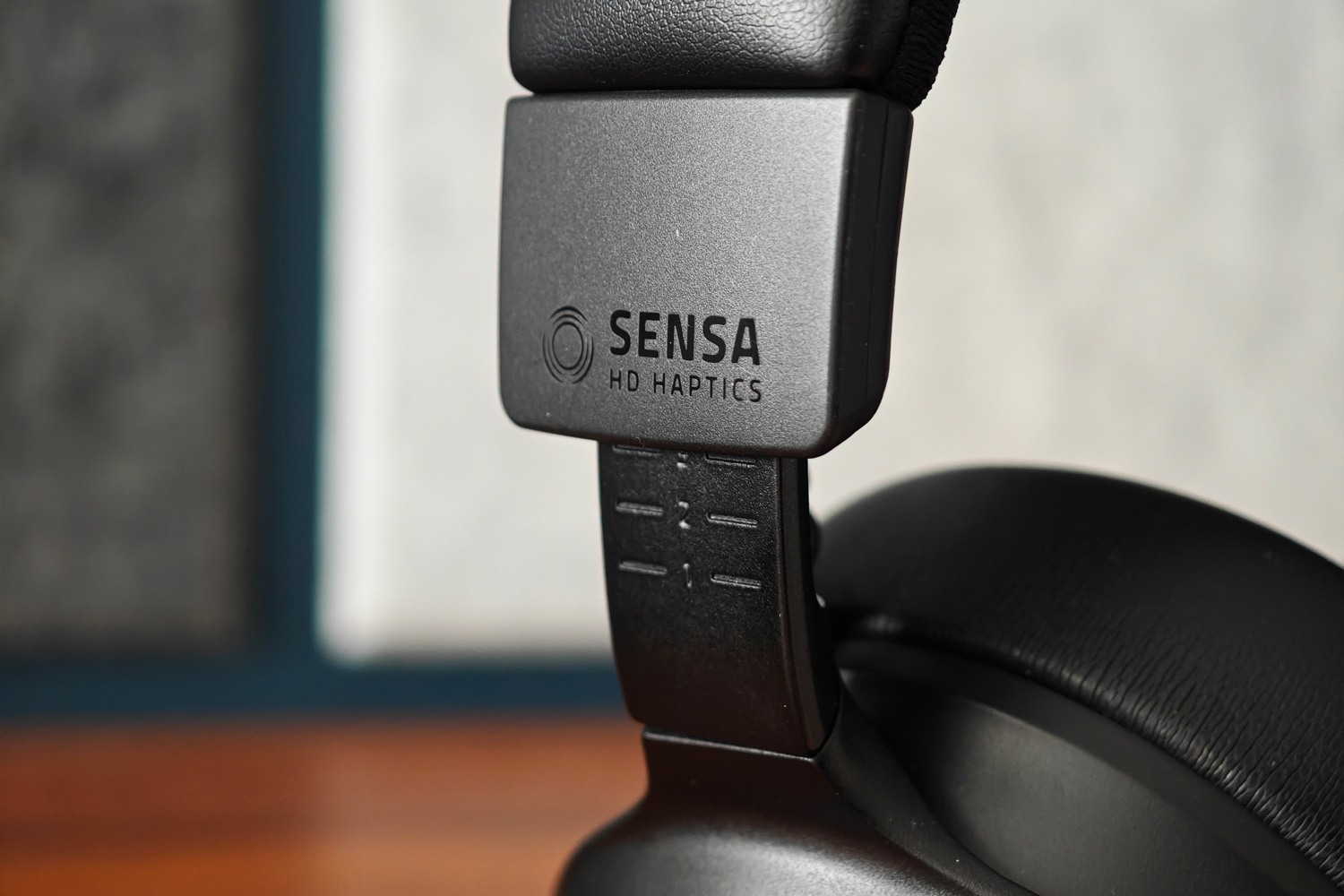
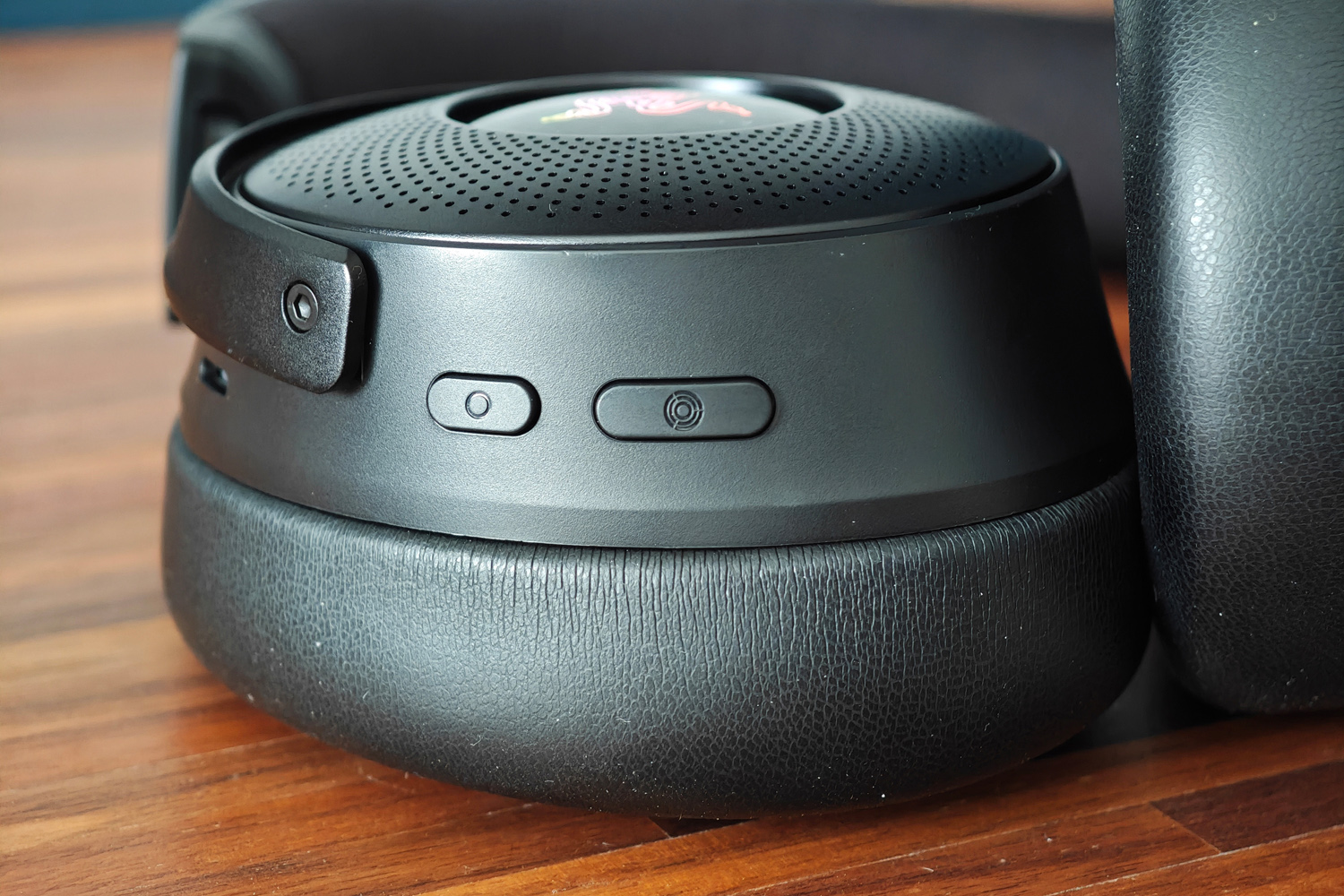
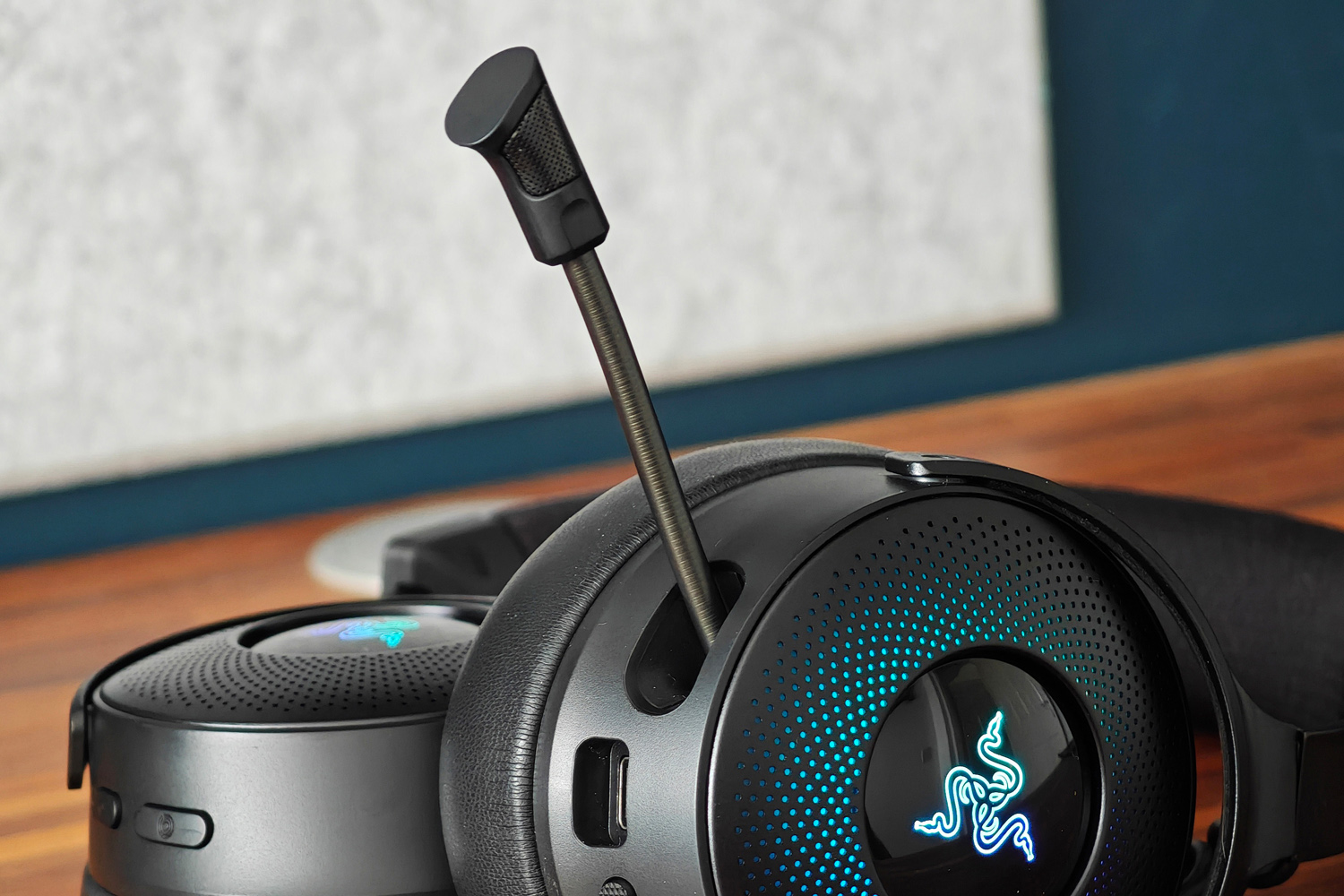
The Pro’s biggest selling point over the regular Kraken V4 is its Sensa HD Haptics. Razer’s proprietary form of force feedback uses vibration motors and understands direction, so can make it feel like an object is passing from one side of your head to the other based on what’s happening in-game. So long as your title supports the tech, that is. Plugins are available for Unity, GameMaker and Unreal engine developers, and Razer has tapped up plenty of big names to have games ready in time for launch. Sadly S.T.A.L.K.E.R. 2 still hadn’t landed by the time I wrapped up testing, so I largely stuck to Hogwarts Legacy and Final Fantasy XVI.
Each time swords clattered or magic spells erupted, the headphones would vibrate convincingly: both ears at once when the object was in front of my character; one side at a time if the effect was happening to my left or right; and subtly enough so as not to distract from the gameplay. While the effects aren’t quite as pronounced as they were on the Freyja haptic cushion (which has three times the number of motors to rumble at any moment, spaced further apart to enhance the feeling of directionality), I still felt combat was a notch more visceral than when Sensa HD was switched off.
It’s a totally difference experience to a bass-heavy headset that rumbles at the merest hint of low-end noise; the vibration is completely divorced from the audio in compatible games, so can be used for things like opening heavy item chests or adding weight to a weapon reload. I’m betting racing sims will benefit from it massively – though there weren’t any available to confirm my theory during the review period.
You can opt for audio-based haptics instead, which react to bass and sub-bass sound in your movies and music as well as unsupported games. I quite liked the extra thump while gaming, and some action-heavy films really benefited from it too, though I stuck to the lower intensity levels – it can get overwhelming on the Dynamic setting with everything cranked up. Still, there’s a nuance here I’ve not experiences on other headsets with haptics, including previous Razer efforts.
Otherwise the headset itself is almost identical to the Kraken V4, with RGB illumination on each ear cup. They default to the familiar rainbow wave pattern, but with a whopping nine different zones on each side, you can get properly granular with the colour customising if you want.
It has the full gamut of connectivity options. As well as Razer’s proprietary, zero-latency Hyperspeed wireless (which had zero dropouts during my testing), you can listen wired over USB-C, via Bluetooth, or a 3.5mm cable. It plays nicely with PlayStation 5 and Nintendo Switch consoles, as well as PC gaming handhelds like the Steam Deck and both iOS and Android mobile devices. This is also the first Razer headset to let you mix Bluetooth and wireless sources, which comes in very handy when using a second device for voice comms.
Battery life very much depends on how you use the headset. Sticking to a 2.4GHz connection with the haptics and RGB off, I crept north of 46 hours before needing to recharge – a very close result to Razer’s 50 hour claim. Adding a simultaneous Bluetooth hookup to my smartphone into the mix sapped an extra five hours from that total. With the haptics and lighting fully cranked, though, I could drain the headset in about 12 hours of gaming. With no hot-swappable batteries you’ll need to stay tethered over USB-C if you want to game any longer.
Interface: new kind of synapse
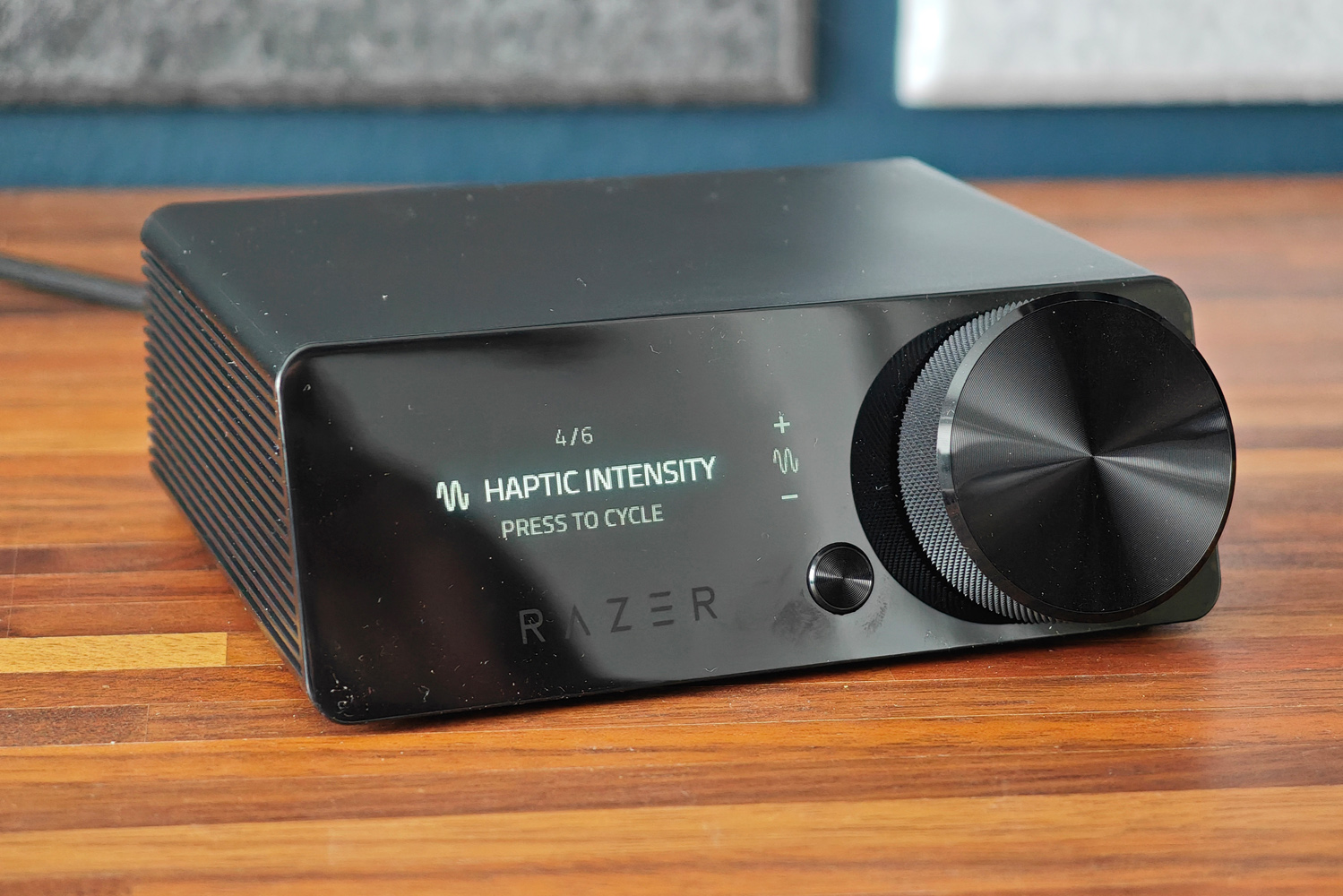

Older, wired Kraken headsets had inline sound controllers, but the V4 Pro is the first to get a dedicated desktop control hub. The small black box is about as big as a gaming mouse, and puts a giant multi-purpose dial and bright monotone OLED display within easy reach.
A rubber base ensures it stays put when plonked down on a desk, and all the connectivity is found at the rear. There are two USB-C ports – one for your PC, one for a games console – along with a 3.5mm auxiliary input. Bluetooth pairing is handled via the headphones, rather than the base unit; Astro’s rival A50 X does it the other way around, meaning you meaning you can’t take it too far from the base station. That’s not a problem for the Razer, if you want to wear it out of the house.
The OLED screen was sharp enough I could make out icons and text clearly from a few feet away, and the selection of retro game-inspired screensavers are a neat touch. I got premium hi-fi vibes from the oversized volume knob, too. A second, smaller button cycles through volume adjustment, EQ presets, microphone sidetone and haptic profiles, with the volume dial making selections and adjustments.
Whether you prefer to reach for the control hub, or for the buttons on the headset itself, is largely personal preference. There’s not much one can do that the other can’t.
Naturally there are plenty of advanced features that won’t fit on the control unit’s simple screen, like the 10-band custom EQ; for that you’ll need to grab Razer’s one-stop-shop Synapse software. The Kraken V4 Pro launched alongside Synapse 4.0, a major update that has been a long time coming. I found it a lot easier navigating the new tab-based interface than the old, cluttered layout, and it generally felt more responsive than before.
Razer still has some kinks to iron out, though. It would sometimes revert my custom settings to the defaults, and the Sensa HD Haptics would pick and choose when to detect games. There’s little in the way of manual microphone adjustment, too – if you don’t like any of the EQ presets, you’re effectively out of luck. There’s no flat EQ option here, either.
Sound quality: get your game on
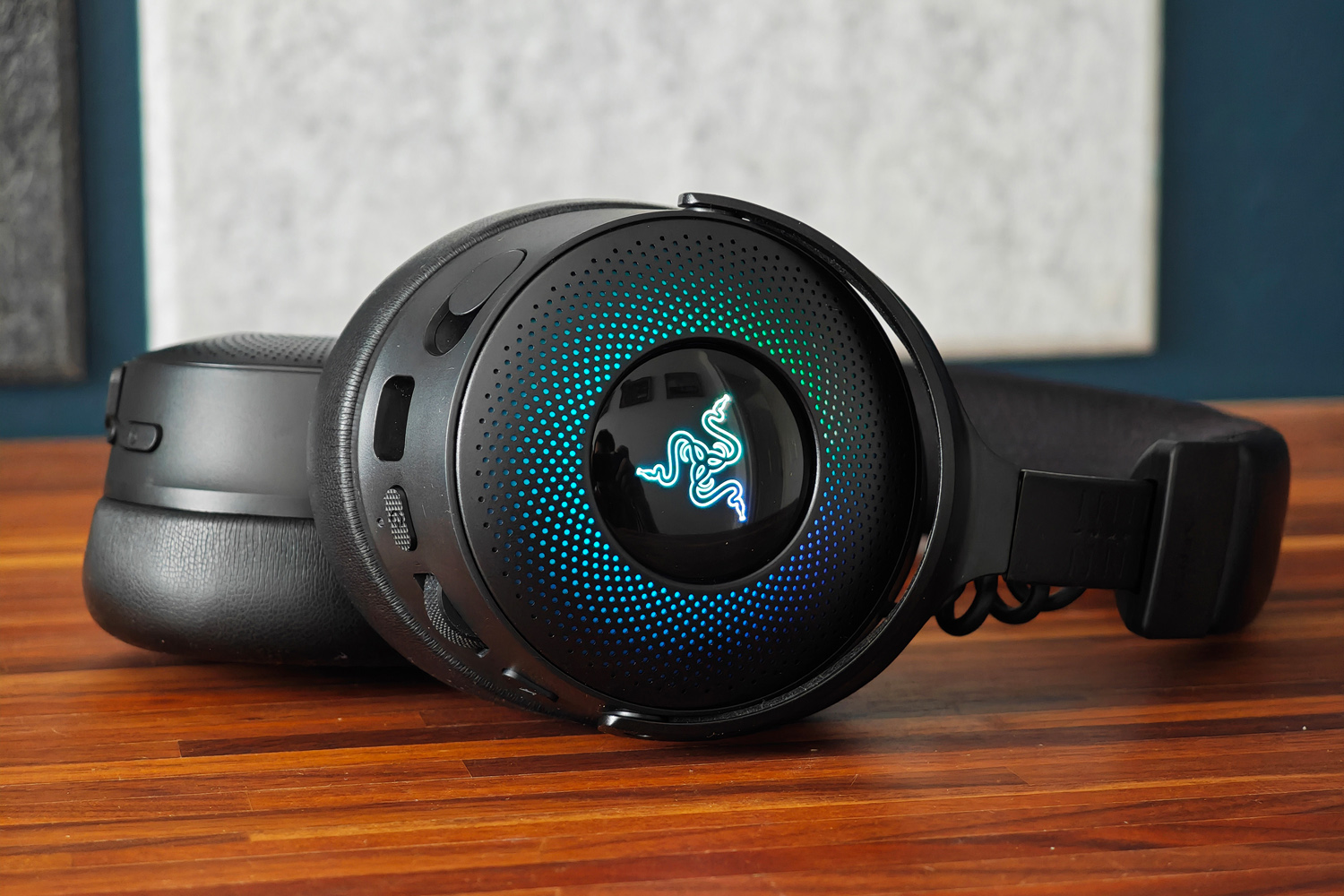
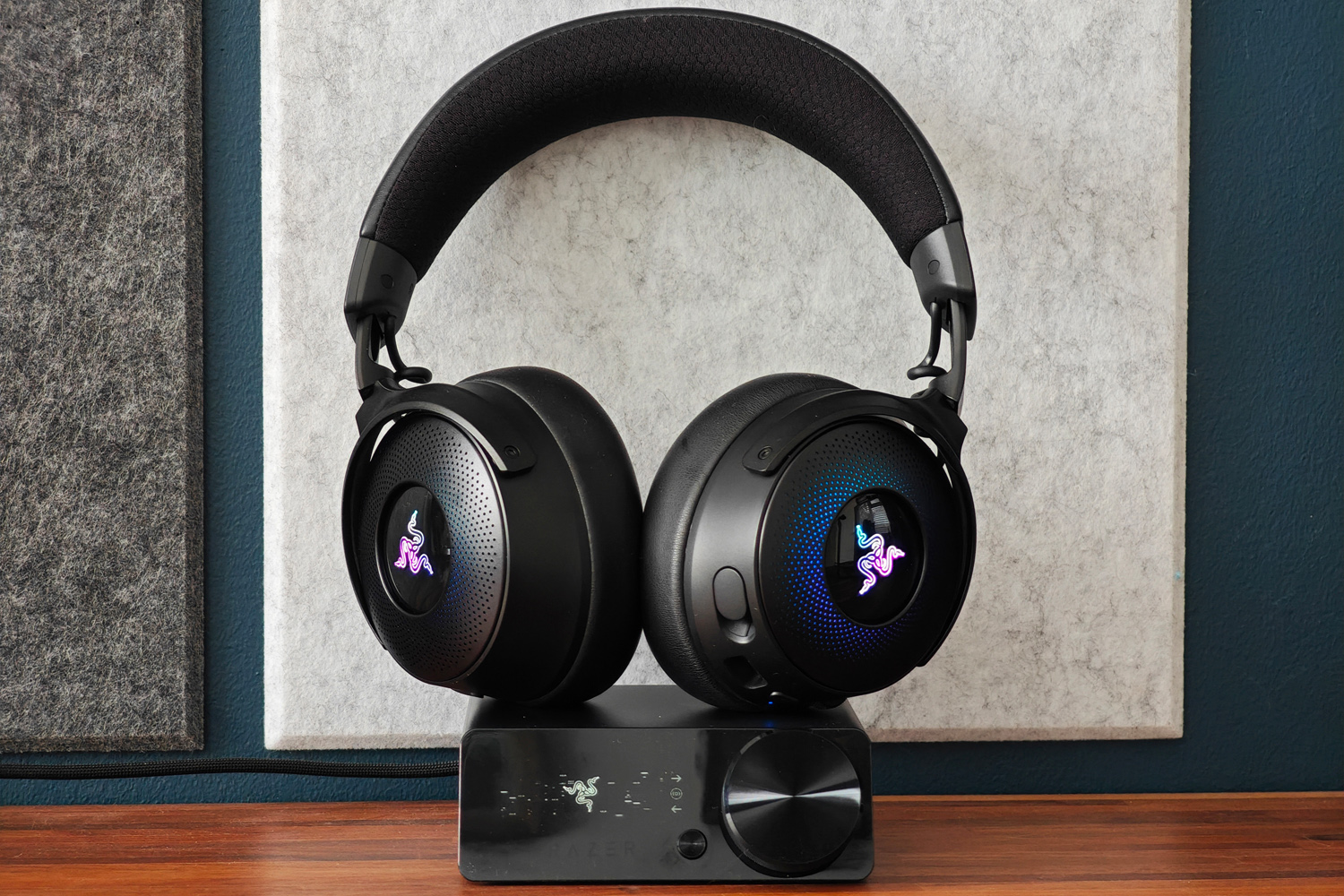
The Pro re-uses the Kraken V4’s tried-and-tested 40mm dynamic drivers, which are made from a bio-cellulose material. They’re a closed-back design, but have an open driver plate instead of mesh, so there’s less material getting between the drivers and your ears. My several weeks of testing included Spotify soundtracking my workdays and a fair few streamed TV shows, as well as lots of gaming; throughout it all, this headset stayed composed.
There was a pleasant amount of depth and body to all three EQ presets (Game, Music, Movie), with a low-end that didn’t intrude on the rest of the mix when it wasn’t required. Explosions and effects would still rumble, and the sub-bass squelch of a Chase & Status tune was suitably filthy, yet vocals and speech rang clear. The Kraken definitely has a warm tone, and I thought its Game preset was a little reserved out of the box, but Synapse custom EQ provides plenty of options for adding some extra dynamism.
There was good detail on show throughout the rest of the frequency range, with a fairly crisp high-end. I don’t think it quite matches the high-end precision of the Logitech G Pro X 2 and its larger 50mm graphene drivers, but shattering glass and footsteps still felt satisfyingly punchy.
Naturally you’re getting THX spatial upmixing here (Razer owns the brand); it ramped up the sense of immersion in most of the games I tried it with, though not everyone will appreciate how it artificially widens the soundstage for music and movies. I’d have liked an option to toggle between stereo and THX on the control box, but this is only available through the Synapse software.
On the other side of the sound coin, I wasn’t all that impressed by the boom mic. It uses Razer’s HyperClear super wideband pickup pattern, which is supposed to deliver pin-sharp clarity and effective background sound rejection; it did fairly well on the latter, stripping out computer fan noise and keyboard clatter, but my voice sounded rather hollow. Even after some tweaking using Synapse’s limited options, it was still a bit weaker than I’d like. It gets the job done for in-game comms and virtual meetings, but a desktop microphone is still your best bet for content creation.
Razer Kraken V4 Pro verdict
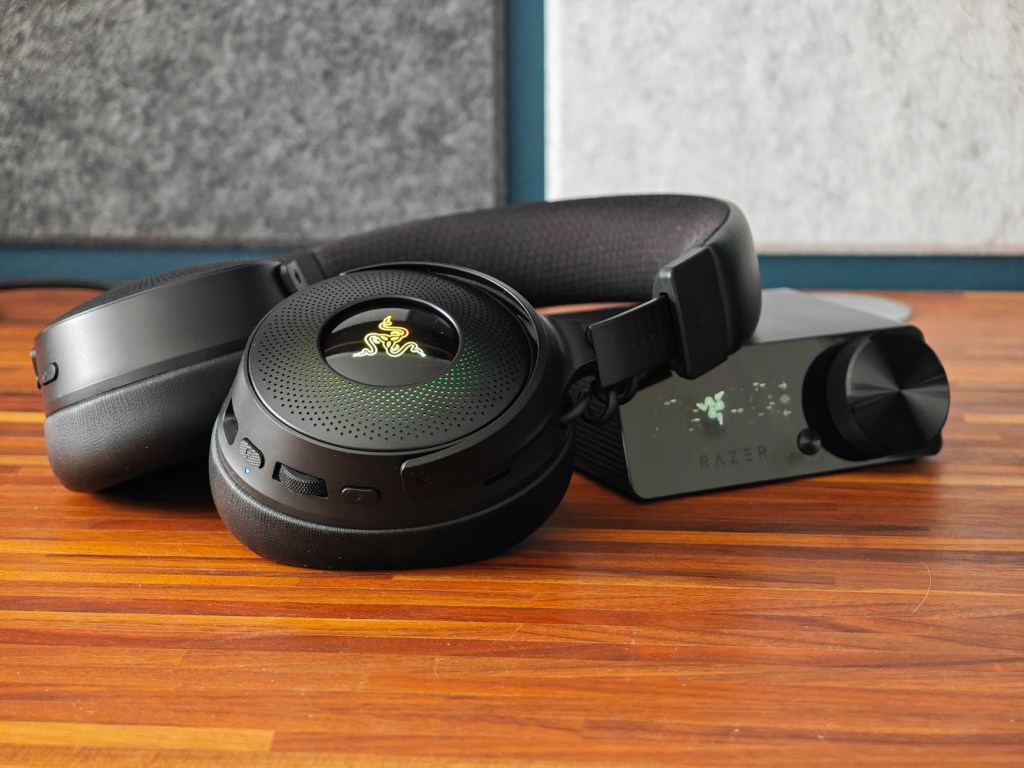
The Kraken V4 Pro is a great showcase for Razer’s new Sensa HD Haptics tech. I loved the head-rattling rumble when playing compatible titles, and the audio-to-haptics option adds a bit of extra depth to unsupported games. Developer support is still in the early days, so it feels more like a neat addition than a must-have right now – but I’m excited to see how it grows from here.
The control box is a genuinely useful way to tweak sound settings on the fly without alt-tabbing away from your game, too – even if you can make similar swaps using buttons on the headset itself. My few issues with the software are hopefully going to be sorted soon, as Synapse 4.0 is still in its infancy.
When the design, materials and sound quality are otherwise on par with the more affordable Kraken V4, you’ve got to really want the expanded connectivity – and trust that more games will add haptic support – to justify the heady $400/£400/€450 asking price. But if you don’t mind paying the early adopter fee, this is a no-holds-barred gaming headset in every other respect.
Stuff Says…
A high-end headset that justifies its equally high-end price. The Kraken V4 Pro shines a spotlight on Razer’s exciting new haptic tech, but doesn’t forget to sound great.
Pros
Fantastic build, styling and comfort
Base unit useful for in-game adjustment
Sensa HD is unique and impressive in action
Cons
Limited game support for haptics at launch
Some initial software stumbles
Undeniably pricey
Razer Kraken V4 Pro technical specifications
| Drivers | 40mm dynamic |
| ANC | No |
| Connectivity | Proprietary wireless, Bluetooth, USB-C, 3.5mm |
| Ports | 2x USB-C, 3.5mm |
| Battery life | 13hrs (haptics & RGB on) 50hrs (haptics & RGB off) |
| Weight | 397g |

